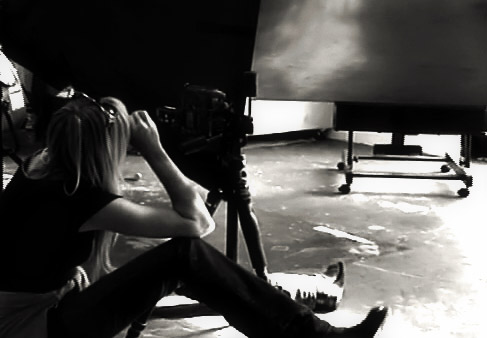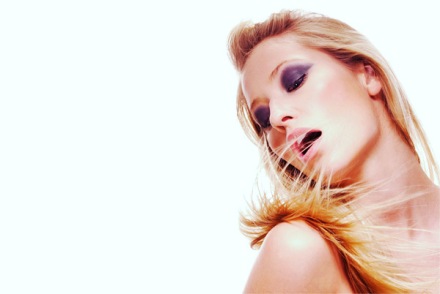AKA: How to put together
the perfect crew!

When I am assigned a shoot, the first thing I get to work on is hiring my crew. When I talk about crew here I am talking about the hair stylist, make up artist and wardrobe stylist. These three people are going to play a huge importance to the shoot. Without their talent and their work, I really can’t produce a great fashion shoot. And I need all three to be talented and hard working. In other words, if I have put in the time and energy to find the perfect model, get the proper location all set up with permits or permission or whatever it takes, then I find a great wardrobe stylist who pulls amazing couture labels like Galliano and Dior and a make up artist who has skills to die for but the hair stylist shows up and can’t do an up do, I’m pretty much looking at a half finished production.
Here’s what I do to ensure that my shoot is going to look amazing! First of all, for the most part, I use a hair, make up and stylist agency. I work with the booker to find the right talent for the right job. Again, it’s like finding the right model. I’m not going to look for a make up artist who’s book is primarily lifestyle or clean beach stuff when I’m shooting an editorial in a studio and the editor wants a couture shoot. I’m going to look for a make up artist that has beautifully well executed high fashion make up in her book. Same with the hair stylist. And same with the wardrobe stylist. It’s great that they might have just done a year of wardrobe styling for Levi’s, but if they don’t know how to handle a $10,000 Chanel gown, I can’t use them for my editorial shoot.
So here’s how it went down with my last shoot for an 8 page editorial. The theme of the magazine issue I’ve been assigned to shoot for is the “Art Issue”. The editor wants big labels and he wants me to shoot dresses for this editorial. So I called a booker at one of the agencies that I like working with. I’ll be honest here: I work with agencies where I like the booker. It’s nice to have someone who gets my style and who gets me. And someone who’s honest and communicates well. When I write an email about job details, I insist they respond quickly. The last thing I need when I’m in pre-production is not knowing if I have my crew hired or why the booker isn’t getting back to me. So for this shoot I called Mia Fina at Artists by Timothy Priano in Los Angeles. Artists by Timothy Priano has offices in New York, Miami, Chicago and Los Angeles. They are a very reputable hair, make up and stylist agency. I told Mia what I’m shooting and what I’m looking for and gave her a rough date of the shoot. She then sent me an email with 2 or 3 choices for hair, make up and wardrobe stylist. I then ran the list by my editor and he gave me his input on whether he had worked with any of them before and if he preferred one over the other. The editor and I both looked at their pages on the agency website while were on the phone with each other, and narrowed it down to who we preferred. I then got back to Mia and told her who I was mainly interested in working with. With the hair stylist, she had to verify if she could do up do’s. That’s another thing: you have to be able to conquer the lingo in the fashion world. You have to know the difference between a french braid and a french twist (ie. pictured below). You really have to know how to communicate with your team in order to get the results you want.

After about a week of going back and forth of who was available or who might be put on hold for another gig, we nailed the crew down and I got a great team for my shoot. I worked with make up artist Lucine, I also worked with Stephanie Pohl who did hair and Robyn Goldberg who was the wardrobe stylist. All three of these girls were amazing at what they do! And they all got along well, which is another thing that is so important. Fashion shoots are tense enough. A million little things can go wrong on them so it’s important that your team has a good attitude and willing to overlook the little hiccups and just focus on giving the shoot their very best! It’s a huge drag when you have a diva hair stylist on your shoot throwing a hissy fit because the model’s hair doesn’t hold the curl he’s trying to get. Or the wardrobe stylist throws a tantrum because the shoes are one size too small on the models’ foot. It’s all about team effort and team spirit to get that great looking shoot accomplished!
I realize that to get your foot in the door with an agency is not as easy as it sounds. So for those of you who are starting out, you can check the local beauty schools. There are academies like Paul Mitchell and Sassoon who have students learning how to cut, color and style hair. You can find out if there are any students who would like to test for their portfolios. There are sure to be some students who would like to get into print and not just stay in the salon. There are make up schools like this as well. With stylists, it’s a bit trickier. Try some production houses in your area and see if they can give you a list of some of their wardrobe people that they’ve used in the past. You can always do a TFP, which is test for portfolio or test for pictures. Word of mouth is a good way to meet some of these people too. Even myspace (gulp..did I say that??) has some talented kids on there that are starting out and willing to TFP.
If you’re based in LA, here’s a small list of some agencies you can call and show your book to the bookers. It’s good to introduce yourself and tell them you’re interested in building your book. If you hit it off and they like your work, they will help you out with their talent when their talent is looking to test and expand their books!
Celestine Agency
Artists by Timothy Priano
Cloutier Agency
Photogenics
The Wall Group



